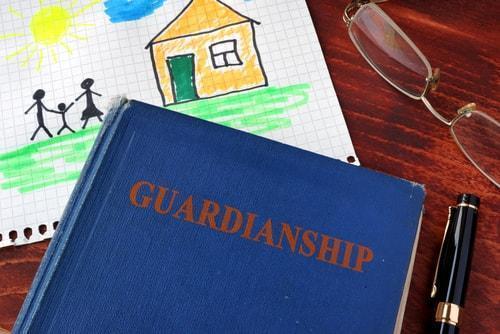Recent Blog Posts
Blending Families Post-Divorce
 Perhaps one of the most difficult and emotional parts of any divorce is when the the future and custody of children is involved. This can still weigh heavily even years after a divorce is final when parents enter into a new relationship and combine their children with those from another family whose parents are no longer married.
Perhaps one of the most difficult and emotional parts of any divorce is when the the future and custody of children is involved. This can still weigh heavily even years after a divorce is final when parents enter into a new relationship and combine their children with those from another family whose parents are no longer married.
Unlike Television
When two adults decide to enter into a relationship, especially one that may result in marriage, their children usually have little influence. However, getting married and starting a family that involves the blending of two, previously existing families, definitely comes with some pitfalls to navigate on the path to establishing a happy and healthy household.
- Couples must work to ensure that any children who only live with them part-time feel like a full member of the family during the time they are with them.
Signs Your Marriage May Be Headed for Divorce
 It is not uncommon for a person to say that they were taken by complete surprise when served with divorce papers. When one spouse does not recognize the signs that their marriage is in trouble it often results in great emotional hardship. However, if you are paying attention, there are some signs that are not too hard to miss.
It is not uncommon for a person to say that they were taken by complete surprise when served with divorce papers. When one spouse does not recognize the signs that their marriage is in trouble it often results in great emotional hardship. However, if you are paying attention, there are some signs that are not too hard to miss.
What to Watch For
Now, just because some appears on the list below does not necessarily mean your marriage is headed for divorce. In fact, if caught early enough, many problems or points of contention between couples can be worked out through counseling. However, both spouses must be willing to put their full energy into correcting any problems and committed to ensuring they do not reappear in the future.
- When a spouse is overly judgmental, criticizing every little thing about their partner, it can lead to problems. Spouses need to accept each other for who they are because constant criticism is rarely an effective means for change.
Dealing with Misconceptions about Divorce at a Young Age
 When young people decide to get married they often face a variety of outside opinions and attitudes about their decision. The same is true for when that marriage ends and the couple, both of whom are still very young, decide to get divorced. It is no less difficult just because they are still young.
When young people decide to get married they often face a variety of outside opinions and attitudes about their decision. The same is true for when that marriage ends and the couple, both of whom are still very young, decide to get divorced. It is no less difficult just because they are still young.
Young Couples and Divorce
Divorce, regardless of the age of the spouses or number of years of marriage, features some very common issues. However, those who divorce at a young age and after only a few years together frequently encounter a number of issues unique to their situation.
Do not let anyone tell you that your divorce will be easy because you are young. Your divorce is no less emotional or traumatic because of your age.
Some may attempt to minimize what you are going through because you did not spend years and years together or have children.
Predicting Divorce
 There are some people who like to say that they saw a divorce “coming from a mile away,” but the reality is that predicting the end of a marriage is not like picking a winner at the track. However, there are some who study marriage and divorce and seem to think that, like predicting the weather or the outcomes of sporting events, there definitely are some signs or indications that some marriages are more doomed to fail than others.
There are some people who like to say that they saw a divorce “coming from a mile away,” but the reality is that predicting the end of a marriage is not like picking a winner at the track. However, there are some who study marriage and divorce and seem to think that, like predicting the weather or the outcomes of sporting events, there definitely are some signs or indications that some marriages are more doomed to fail than others.
What Divorced Couples Have in Common
Just as most Super Bowl championship teams have a great defense or a game-changing playmaker, or World Series champs have great pitching and reliable defense, some social scientists have come to the conclusion that divorce couples also share certain aspects. While nothing is 100 percent certain, there is some credibility to their findings.
Establishing Guardianship for Your Children
 The idea of leaving your children parentless due to a tragic illness or accident is not a thought on which many like to dwell. However, taking necessary steps now to establish a clear and legal guardianship plan for your children can provide a measure of relief knowing you have prepared for their safekeeping.
The idea of leaving your children parentless due to a tragic illness or accident is not a thought on which many like to dwell. However, taking necessary steps now to establish a clear and legal guardianship plan for your children can provide a measure of relief knowing you have prepared for their safekeeping.
What to Do, How to Do It
Preparing for the care of your children in the event of your death can be an easy process if one adheres to established laws and procedures. Ensuring your guardianship plan passes legal muster will prevent others from contesting guardianship, and wresting away custody of your children from those who you want to raise your kids. Before you get started, however, you probably have some questions:
- What exactly is a guardian? A good place to start. Technically speaking, a guardian is the person, agency, or organization ordered the courts to oversee the well-being of another. Most parents, in planning for guardianship of their children, select a loved and trusted family member.
What to Know About Divorce Before You Divorce
 Frequently it happens that following a divorce one might find him or herself, not necessarily regretting their divorce, but perhaps wishing they had known more about the life they are about to enter. There are a variety of resources to consult, but be careful of the information you obtain, and from who or where you receive it.
Frequently it happens that following a divorce one might find him or herself, not necessarily regretting their divorce, but perhaps wishing they had known more about the life they are about to enter. There are a variety of resources to consult, but be careful of the information you obtain, and from who or where you receive it.
For Your Consideration
There are so many variables when it comes to divorce, and while there is no, all-knowing crystal ball, there is enough information and anecdotal data to provide people with a map of the obstacles to be faced. Provided here are some descriptions of divorced-life hurdles, gathered from those who have experienced divorce:
- How will the divorce affect your children, and, specifically, toddler-age children? Younger children have not yet developed the emotions or communication skills to effectively convey how the divorce is impacting them. Some have found success with “play therapy,” but there is no way to predict exactly how a divorce will affect them.
Signs of a Successful Relationship
 We generally use this space to provide readers with information about the various issues that surround divorce, the divorce process, child custody, asset division and other related matters. It is important that when one considers pursuing a divorce they have as much information as possible in order to make the best decision. This week we diverge slightly to take a closer look not at what causes divorce, but rather some of the signs that a relationship may last the duration.
We generally use this space to provide readers with information about the various issues that surround divorce, the divorce process, child custody, asset division and other related matters. It is important that when one considers pursuing a divorce they have as much information as possible in order to make the best decision. This week we diverge slightly to take a closer look not at what causes divorce, but rather some of the signs that a relationship may last the duration.
Strong Relationship Building Blocks
Consider these opinions of what makes for a successful relationship when examining your own motives for getting married. It is difficult to measure up on all counts, but recognizing a few of these in your own life could be a good sign:
- Being together for the right reasons; partners share a deep, genuine admiration for each other. Getting married because you do not want to be single is not a good reason to enter into a relationship.
Things About Divorce Only Divorced People Know
 There are a lot of people out there who claim to be experts on a wide variety of matters. The truth is that more times than not, the most knowledgeable person on any issue is the one who has lived the experience. This holds for divorce, as there are certain things about ending your marriage and living as a divorced adult that only those who preceded you really understand.
There are a lot of people out there who claim to be experts on a wide variety of matters. The truth is that more times than not, the most knowledgeable person on any issue is the one who has lived the experience. This holds for divorce, as there are certain things about ending your marriage and living as a divorced adult that only those who preceded you really understand.
Been There, Done That
It is no secret that even just considering a divorce is something that weighs heavily on one’s mind, as the lasting implications affect more than just the married couple and more than just the immediate household. Here is a list of issues that come with a divorce, from those who went through the process:
- You will feel happy. This is true. It may seem odd now, but you will experience some amount of joy in your life despite the devastating effects of divorce.
Telling Children about Divorce
 Honest and open communication is an important tool in any relationship. When it comes to breaking the news about an impending divorce, good communication skills will come in handy. This is especially true when it comes time to telling your children that you and your spouse are divorcing, and the subject of child custody becomes a reality.
Honest and open communication is an important tool in any relationship. When it comes to breaking the news about an impending divorce, good communication skills will come in handy. This is especially true when it comes time to telling your children that you and your spouse are divorcing, and the subject of child custody becomes a reality.
Breaking the News
Just as many adults are affected by the news of divorce, children frequently take the news quite hard. The range of emotions, from anger to guilt, can impact many other areas of their young lives. Here are a few thoughts on the subject that may just help you break the news while easing the pain your children feel, even if just a little bit:
- Keep your own emotions in check when telling your children about the divorce. This will put you in a good frame of mind when discussing the matter with the kids.
Reasons for Divorce
 The reasons people divorce, as well as those why they marry, are sometimes difficult to put into words. Sometimes the cause is easy to pinpoint, whether infidelity, incompatibility or even abuse, but frequently one or both spouses discover some innate feeling that only makes sense to that person. Whether others believe you or not, when you decide that divorce is the right decision the reasons may only make sense to you.
The reasons people divorce, as well as those why they marry, are sometimes difficult to put into words. Sometimes the cause is easy to pinpoint, whether infidelity, incompatibility or even abuse, but frequently one or both spouses discover some innate feeling that only makes sense to that person. Whether others believe you or not, when you decide that divorce is the right decision the reasons may only make sense to you.
Rarely Discussed Reasons for Divorce
As mentioned above, there are some pretty common and overt reasons why marriages fail. When one or both spouses cheat, partake in an extramarital affair, or place other things, such as work or time with friends, ahead of the marriage it often signals the end of that relationship. However, presented here are some common reasons people choose to divorce that, although common, rarely receive the attention they deserve.

 630-409-8184
630-409-8184













